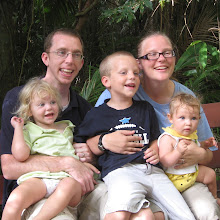Bob in Goleta, CA asks: "What is happening with the rover today? What are the people in the space shuttle doing? What is the recent dust storm on Mars doing to the solar system?"
Great questions, Bob! I'm so glad you asked, because your timely questions bring me to my announcement: today is the official kick-off of my weekly news round up. In an effort to make sure you at least see a headline and know where to get more info on some of the top happenings of the week, I'm going to post a round up of all the cool stuff you might have accidentally missed. And I promise that this week's edition will answer your questions, Bob.
Let's start with the rovers. Spirit recently got a quick cleaning from a two recent dust storms that reduced the amount of dust on the solar panels significantly. Interestingly, when the rovers arrived, engineers from JPL were concerned that Mars' frequent and intense dust storms would cake the solar panels with dust and reduce their battery life; however, just the opposite has been true - the dust storms have repeatedly given the rovers new life as they've swept away some of the layers of dirt from the panels. Opportunity is also doing well; its right front wheel has had some issues for over three years, and recent diagnostic mobility drives have kept Opportunity and JPL engineers busy analyzing the degree of damage. Status reports for both rovers are updated weekly here.
In shuttle news, the launch of STS-119 (the next shuttle launch) has been deferred. Because of damage to a flow control valve that occurred during Endeavor's Nov. 2008 flight, NASA officials have decided that further investigation is needed before setting a launch date. STS-119 will carry a truss for the ISS as well as a new crew member to the space station. More info here. There are no current shuttle missions at this time.
In astronomical headlines, NASA's Fermi Gamma-ray Space Telescope (formerly known as GLAST) saw the largest gamma-ray burst ever recorded, and it saw it in hi-res. Gamma rays can be ejected from dying stars as they collapse and form black holes, sending huge amounts of energy into space travelling at nearly the speed of light. These bursts can be up to 5 billion times as energetic as visible light. While the processes that produce these gamma ray bursts aren't well understood, the Fermi telescope is helping scientists learn more by studying wavelengths of light not visible to the human eye. For more info, see the press release here.
And finally, NASA wants you to help name the new node on the International Space Station. Nodes 1 and 2 are named Harmony and Unity respectively, and submissions for the name of the new node will be accepted here. The winning name will be announced on April 28th. No prizes for picking the winning name, just the satisfaction of knowing you are awesome.
Saturday, February 21, 2009
Subscribe to:
Post Comments (Atom)




No comments:
Post a Comment